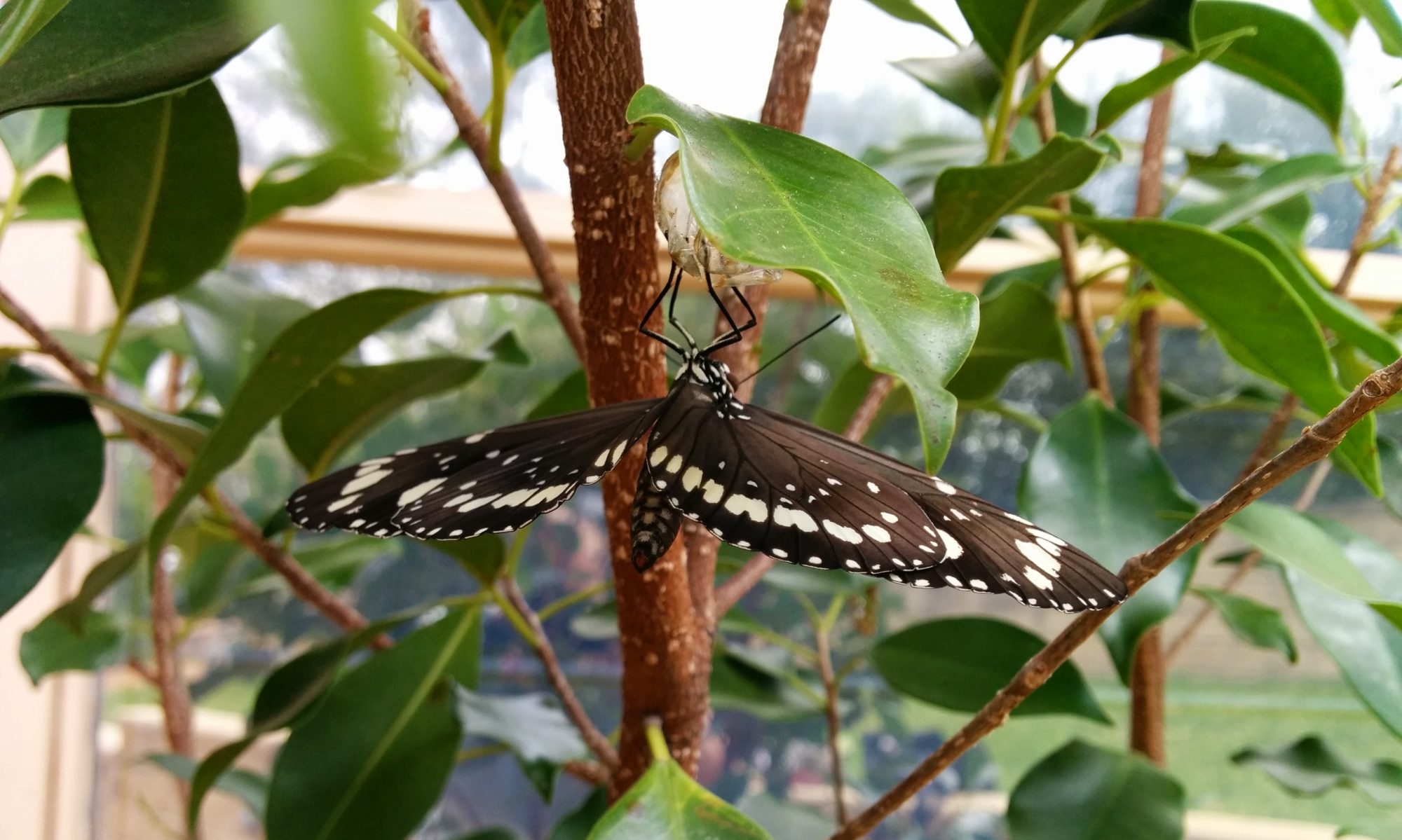According to the Australian Bureau of Statistics between 2008 and 2017 in Australia, 266 people died from an animal. But they are not what you would expect. Find out which Australian animals are really dangerous.
- 77 deaths from horses, cows and other ‘animal transport’.
- 27 deaths from bees, wasps and hornets stings
According to a team from the University of Melbourne, from 2000 to 2013 there were 42,000 hospitalisations of stings or bites and bees, wasps and hornets were responsible for 31 percent of them.
- 26 deaths from sharks and other marine animals
- 23 deaths from snakes and lizards
- 22 deaths from dogs
- 17 deaths from crocodiles
Wordwide Mosquitoes kill more than 700,000 people worldwide every year. Snakes are second on the list, killing about 110,000 people.
Information from Australian Bureau of Statistics
Box jellyfish
It doesn’t often kill swimmers, yet the box jellyfish usually has a 10/10 danger rating. It’s said to be the most toxic animal on earth with venom containing toxins that attack the heart, nervous system, and skin.
Inland Taipan
The most venomous snake in the world is endemic to Australia and lives in the desert. Often referred to as the Fierce snake, however they generally stay away from people. Even through it is the world’s most venomous snake, it isn’t the most dangerous due to is shy behaviour and remote location.
Saltwater Crocodile
Saltwater crocodiles can be found in the ocean, estuaries and even in freshwater. They were widespread throughout Southeast Asia and their numbers had decreased due to hunting. Saltwater crocodiles are a protected species in Australia and their numbers have increased.
Saltwater crocodiles are huge, aggressive and opportunistic. They eat small and big animals, including humans, although it’s still fairly rare (24 deadly attacks between 1975 and 2009). Still, make sure it’s safe to swim and avoid swamps.
Always take the “crocodile warning” signs seriously.
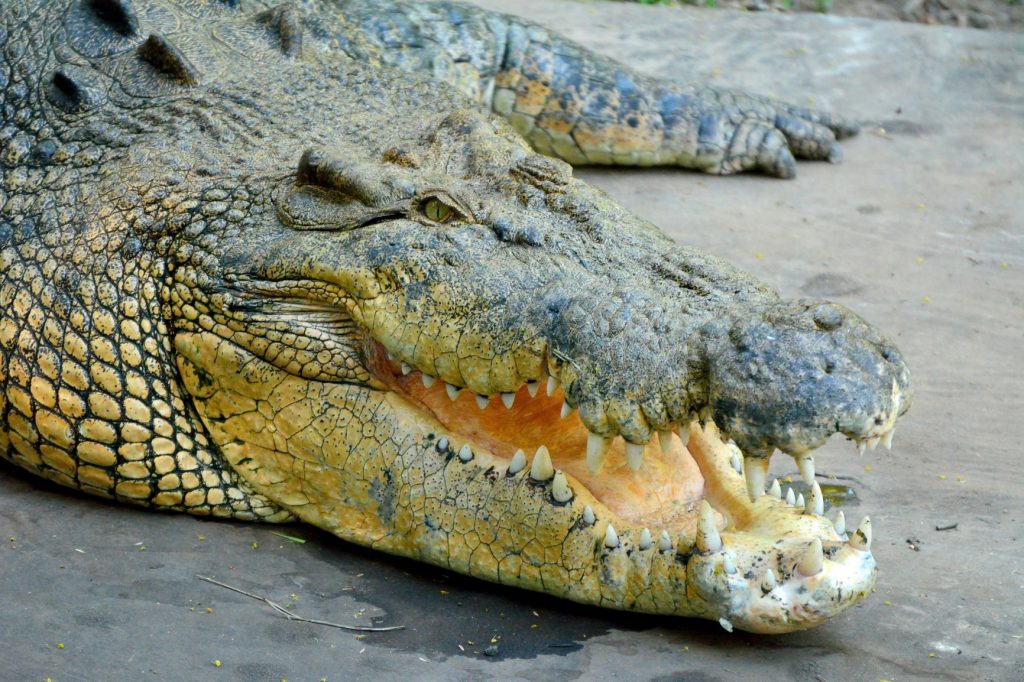
Blue-ringed Octopus
Blue-ringed octopuses, highly venomous species of octopus that are found in tide pool. They can be identified by their yellowish skin and characteristic blue and black rings that change color dramatically when the animal is threatened.
They are recognized as one of the world’s most venomous marine animals they are dangerous to humans if provoked when handled because their venom contains the powerful neurotoxin tetrodotoxin.
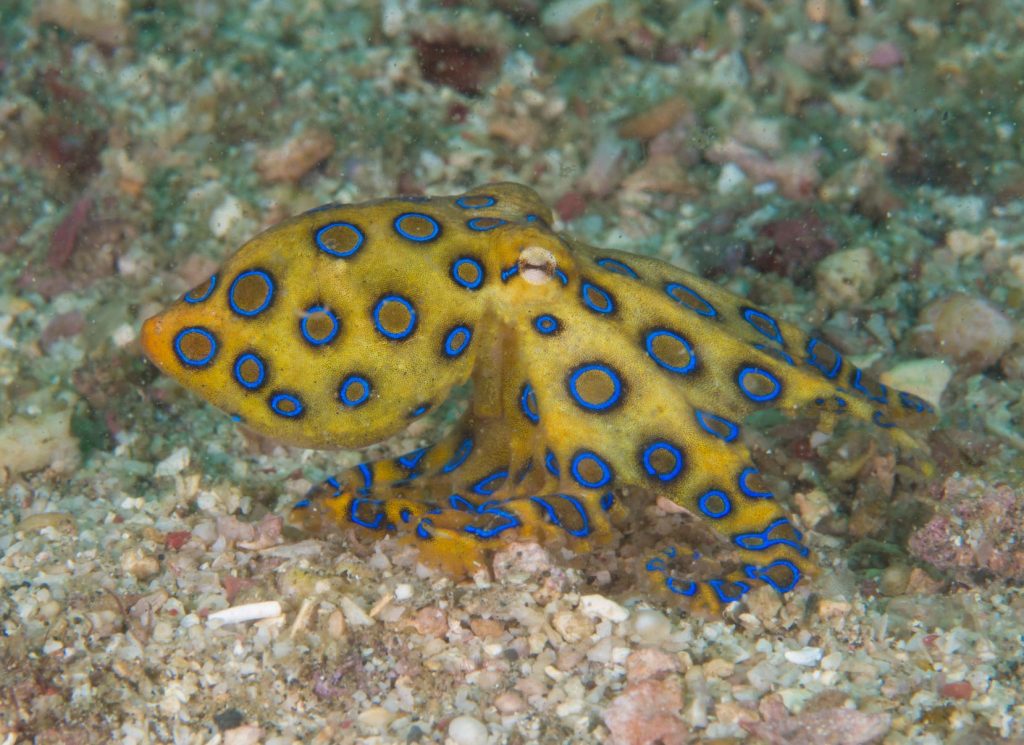
The venom shuts the body down, paralyzed the victim and breathing is no longer possible. There’s no known anti-venom, although treating a bite is possible and includes helping the patient breathe until the toxin is removed from the body.
Stonefish
Stonefish are venomous, dangerous and can be fatal to humans and are the most venomous fish. The stonefish is very hard to spot because it usually lies motionless and is camouflaged against the rocks. They are found throughout shallow coastal waters of northern Australia. Be careful not to step on them.
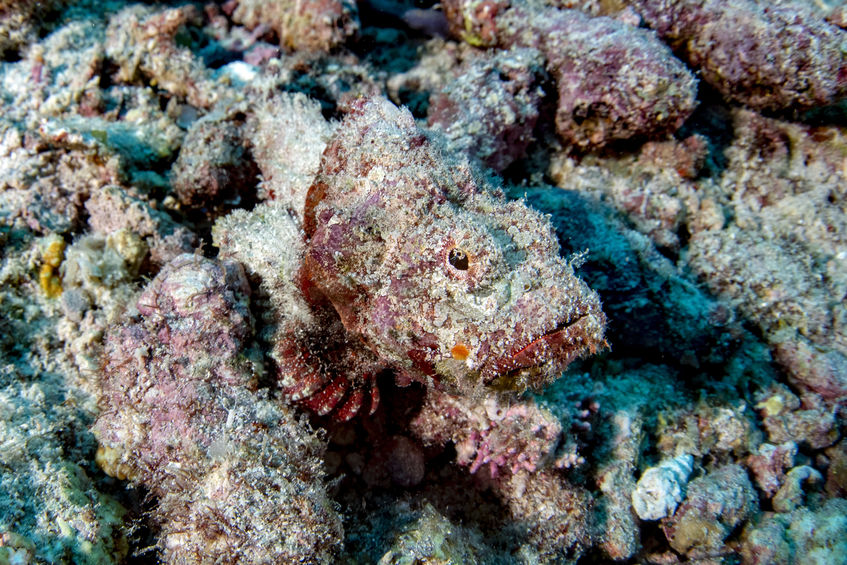
Great White Shark
The Great White Shark is a famous predator and can be found in the coastal surface waters of all the major oceans. Current research estimates the lifespan of great white sharks is 70 years or more.
Even though its reputation as a man-eater is unfair, they are still responsible for more recorded human bite incidents than any other shark. Sharks often mistake surfers for turtles or sea lions.
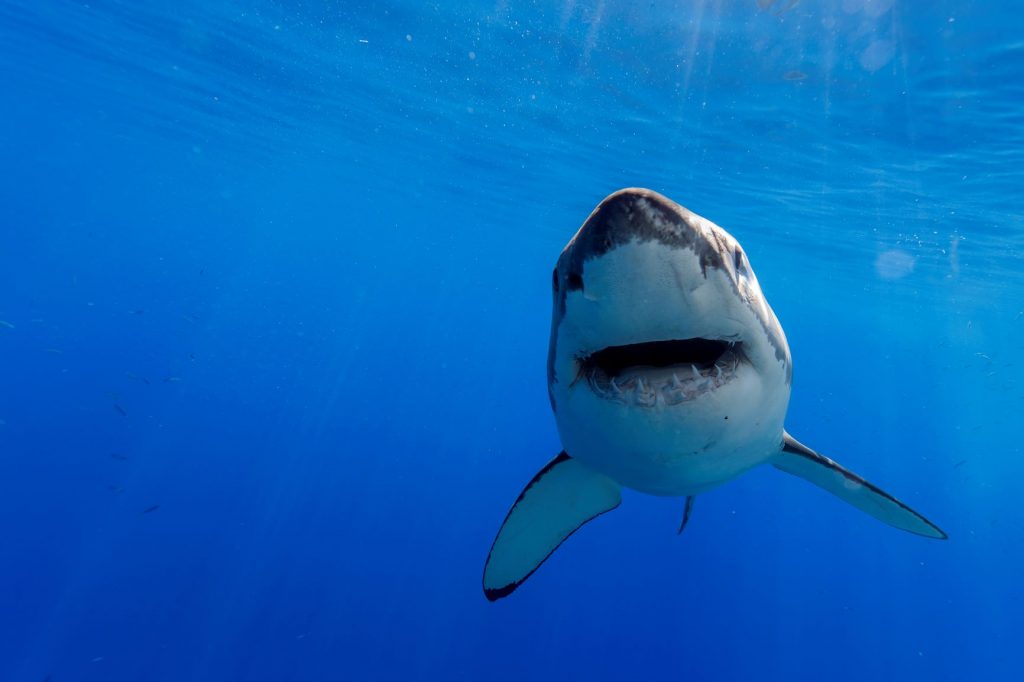
Don’t avoid the beaches because of possible shark attacks. Deadly encounters are rare, about 5 yearly in the entire world.
Cone Snail
Cone snails inject venom to paralyze their prey. They use a hypodermic dart (a modified radular tooth) to inject venom. The venom contains about 100 different peptides (short proteins) that act as neurotoxins.
Funnel Web Spider
The Sydney funnel-webs, Atraxrobustus garners, while no-one has died from a funnel-web bite for more than 40 years. They carry a very powerful neurotoxin which can be administered in large doses. They are responsible for 13 of Australia’s 27 recorded deaths from spider bites in the past 100 years.
A funnel-web’s venom is packed with at least 40 different toxic proteins (called peptides). Only one, robustoxin, is really dangerous to humans. This neurotoxins disrupts nerve signals, switching them all on at once, causing massive electrical overload in the body’s nervous system.
Not all creatures are affected by funnel-web poison: mice, rabbits, guineapigs, dogs and cats are relatively immune and often survive 100 times the lethal human dosage. In general the male is five times more dangerous than the female.
Snakes
Tiger snake – NotechisscutatusTiger snakes are a highly venomous snake species found in the southern regions of Australia, including its coastal islands, such as Tasmania. These snakes are highly variable in their colour, often banded like those on a tiger, and forms in their regional occurrences.
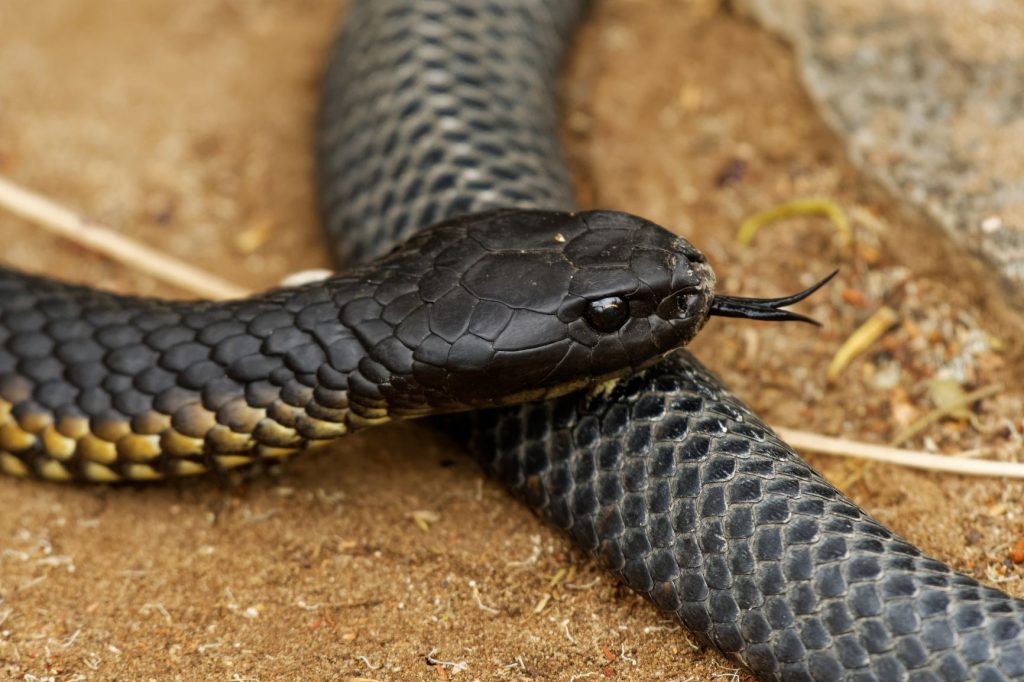
Find out more
Australia’s dangerous animals: the top 30
Australia is home to some of the most dangerous animals in the world. But the deadliest will surprise you.
Curious Kids: Why do so many dangerous animals live in Australia?

